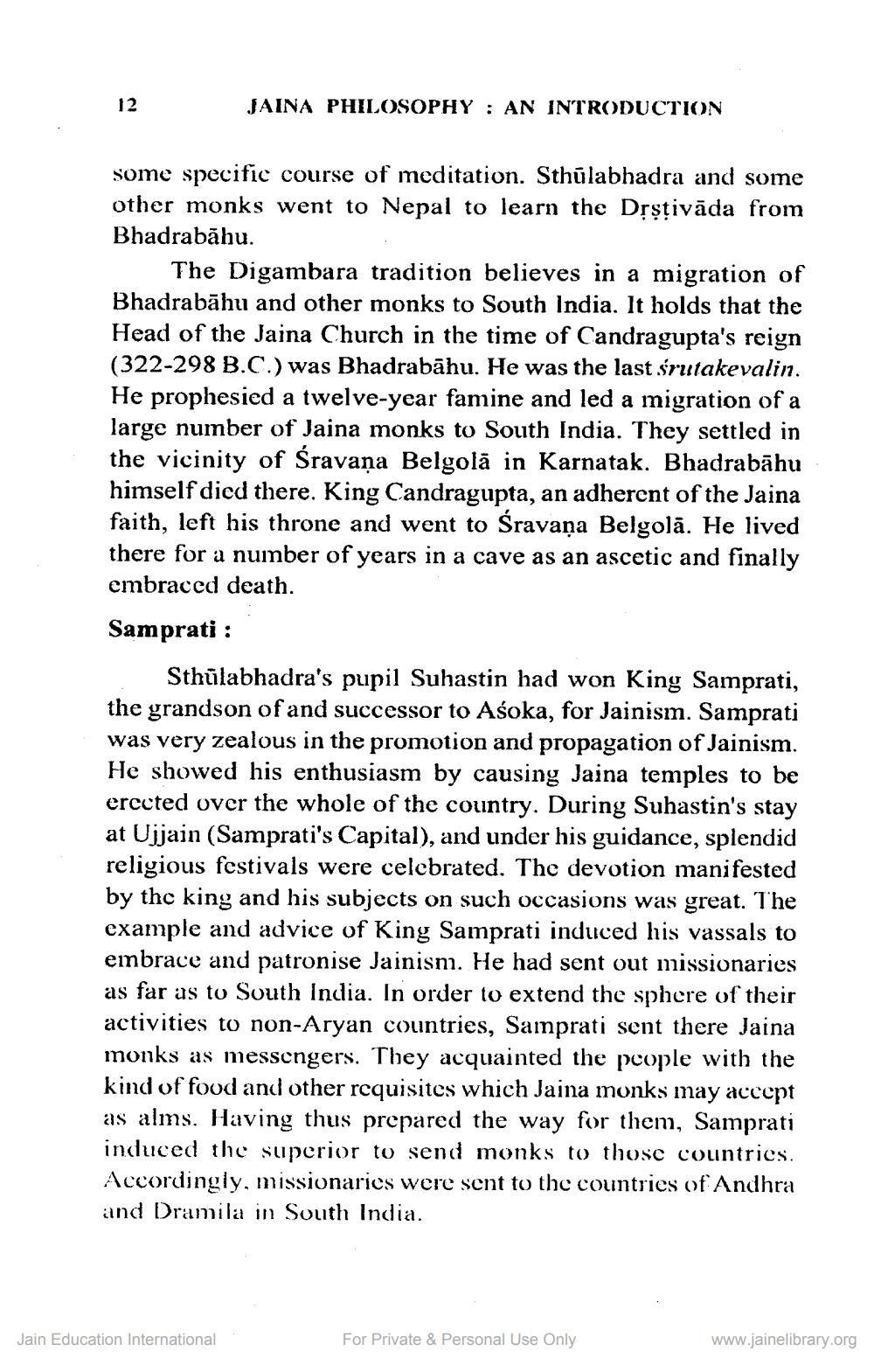________________
JAINA PHILOSOPHY : AN INTRODUCTION
some specific course of meditation. Sthūlabhadra and some other monks went to Nepal to learn the Dșstivāda from Bhadrabāhu.
The Digambara tradition believes in a migration of Bhadrabāhu and other monks to South India. It holds that the Head of the Jaina Church in the time of Candragupta's reign (322-298 B.C.) was Bhadrabāhu. He was the last srutakevalin. He prophesied a twelve-year famine and led a migration of a large number of Jaina monks to South India. They settled in the vicinity of Sravana Belgolā in Karnatak. Bhadrabāhu himself died there. King Candragupta, an adherent of the Jaina faith, left his throne and went to Sravana Belgolā. He lived there for a number of years in a cave as an ascetic and finally embraced death. Samprati :
Sthūlabhadra's pupil Suhastin had won King Samprati, the grandson of and successor to Asoka, for Jainism. Samprati was very zealous in the promotion and propagation of Jainism. He showed his enthusiasm by causing Jaina temples to be erected over the whole of the country. During Suhastin's stay at Ujjain (Samprati's Capital), and under his guidance, splendid religious festivals were celebrated. The devotion manifested by the king and his subjects on such occasions was great. The example and advice of King Samprati induced his vassals to embrace and patronise Jainismi. He had sent out missionaries as far as to South India. In order to extend the sphere of their activities to non-Aryan countries, Samprati sent there Jaina monks as messengers. They acquainted the people with the kind of food and other requisites which Jaina monks may accept as alms. Having thus prepared the way for them, Samprati induced the superior to send monks to those countries. Accordingly, missionaries were sent to the countries of Andhra and Dramila in South India.
Jain Education International
For Private & Personal Use Only
www.jainelibrary.org




